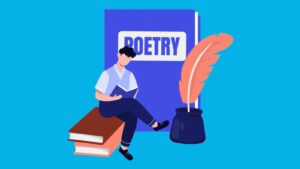Extensive Reading Strategies to Get Students Reading
Extensive reading has been the focus of a great deal of academic attention since Bamford and Day first published their ground-breaking work, ‘Extensive Reading in the Second Language Classroom’ in 1998.
There is much debate about the do’s and don’ts of assimilating it effectively into university prep courses and high-school reading programmes. That said, teachers are often left wondering how to get students reading in the first place. If they do not pick up books outside school, if reading remains a burden to them rather than a pleasure, then discussion about the rights and wrongs of, say, teachers recommending texts or setting home assignments based on reading, are irrelevant.
So, in this article, I look at how we can introduce students to reading anything other than textbooks. First, though, why should students read outside the curriculum?
Predictably, most research into the effects of reading on educational achievement has focused on primary school children and programmes. The idea, of course, is to address the situation when they are young before it becomes a problem. In an attempt to redress the balance, Slavin et al. (2008) surveyed the literature on the effectiveness of different programmes in US high schools. Inability to read comfortably was one reason for students dropping out of courses. Reading difficulties were hampering attainment in just about every subject. Alarmingly, Joftus and Maddox-Dolan (2003) concluded that 6,000,000 US high-school students were reading significantly below their expected levels.
How can we get them to start?
But, to return to the question we started out with: how to get students reading in the first place? Slavin et al. (2008, op. cit.) concluded that the single most important factor in students embracing reading for pleasure was not a particular methodology or high-tech input, but teacher training. Teachers needed to be convinced of the benefits of reading outside the curriculum and to act as reading role models for students.
If teachers carry personal reading material around, leave it lying on their desks, and sometimes talk about what they are reading, it motivates students to follow suit. If they occasionally ask whether they like a book or what they are planning on trying next, it inspires students.
But perhaps we are getting ahead of ourselves. How can students who have never read for pleasure decide what they want to read? It’s not as easy as it seems. Teachers’ recommendations are not always trusted, as reluctant readers recall that it is these very teachers who have forced them to struggle through boring and difficult texts.
One way round this is to ask students who have read something to pen a few words about a book, whether it was interesting or boring; what it was about: science fantasy, gang warfare or romance; and so on. In many countries, book stores ask their staff to recommend works in this way and then display their hand-written cards on the shelves where the books are situated.
Extensive Reading Strategies: Employ the five-finger test
Just a quick word of warning though, students should not choose something that is too challenging. The ‘five-finger test’ is one way to test this. The student opens a book at any page and holds up five fingers, lowering one every time she encounters an unfamiliar word. If she has not reached the end of a page with at least one finger standing, the book is probably too hard.
Extensive Reading Strategies: Drop Everything and Read
Another way is to introduce a DEAR programme (Drop Everything And Read) into school or university, so that everyone stops what they are doing and reads as part of the timetable. Teachers, principals, cleaning staff and students – everyone! DEAR programmes share the following benefits: they encourage as many as half the students who participate to read more outside school; they engender confidence in reading abilities; they offer opportunities to share reading experience with communities of students similarly engaged; and they also impact positively on writing skills (Sheldrick Ross, et al. 2006).
Extensive Reading Strategies: Reading Circles
Then there are reading circles. People disagree about whether students should choose their partners or if we should match stronger readers with weaker ones. Whatever the arrangement, reading pairs and groups can work well. It is important to make sure each group member has a clearly defined role, though: researcher, leader, presenter, time-keeper, and so on so that everybody has a part to play. Students can also start a reading journal and record their thoughts – without these being graded, of course.
There are many other schemes, initiatives, but I hope that these few ideas get you on your way. And, by all means, let me know what you think of this article.
References:
- Bamford, J. & Day, R. (1998): Extensive Reading in the Second Language Classroom (CUP)
- Joftus, S. and Maddox-Dolan, B. (2003): Left Out and Left Behind: NCLB and the American High School
- Sheldrick Ross, C., McKennie, L. And Rothbauer, P. (2006): Reading Matters: What the Research Reveals about Reading (Libraries Unlimited)
- Slavin, R., Cheung, A., Groff, C. and Lake, C. (2008): Effective Reading Programs for Middle and High
- Schools: A Best-Evidence Synthesis






